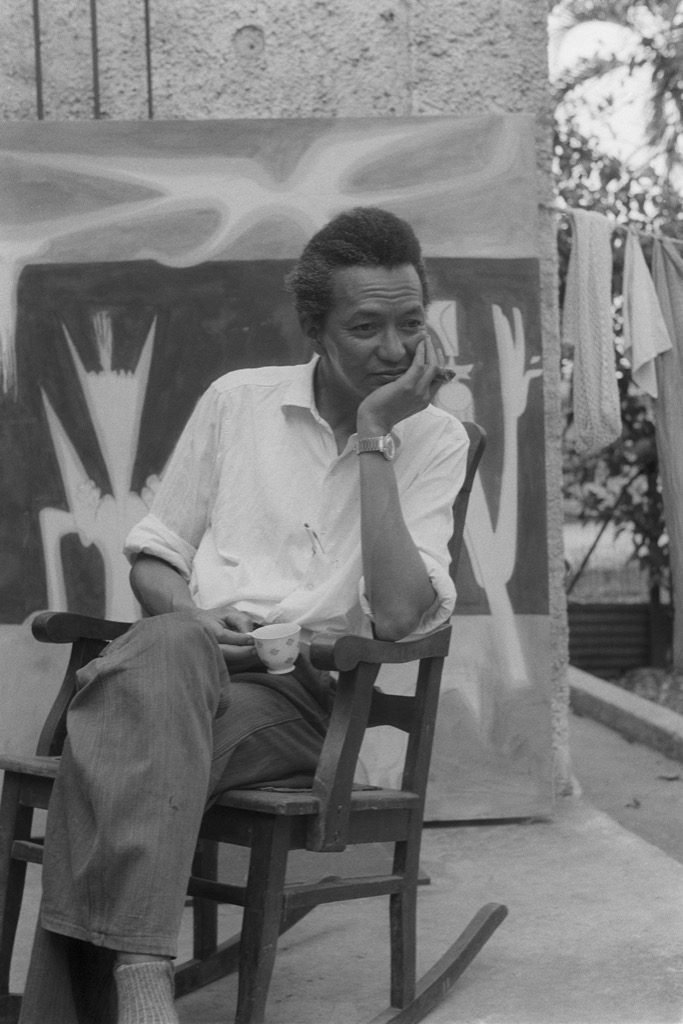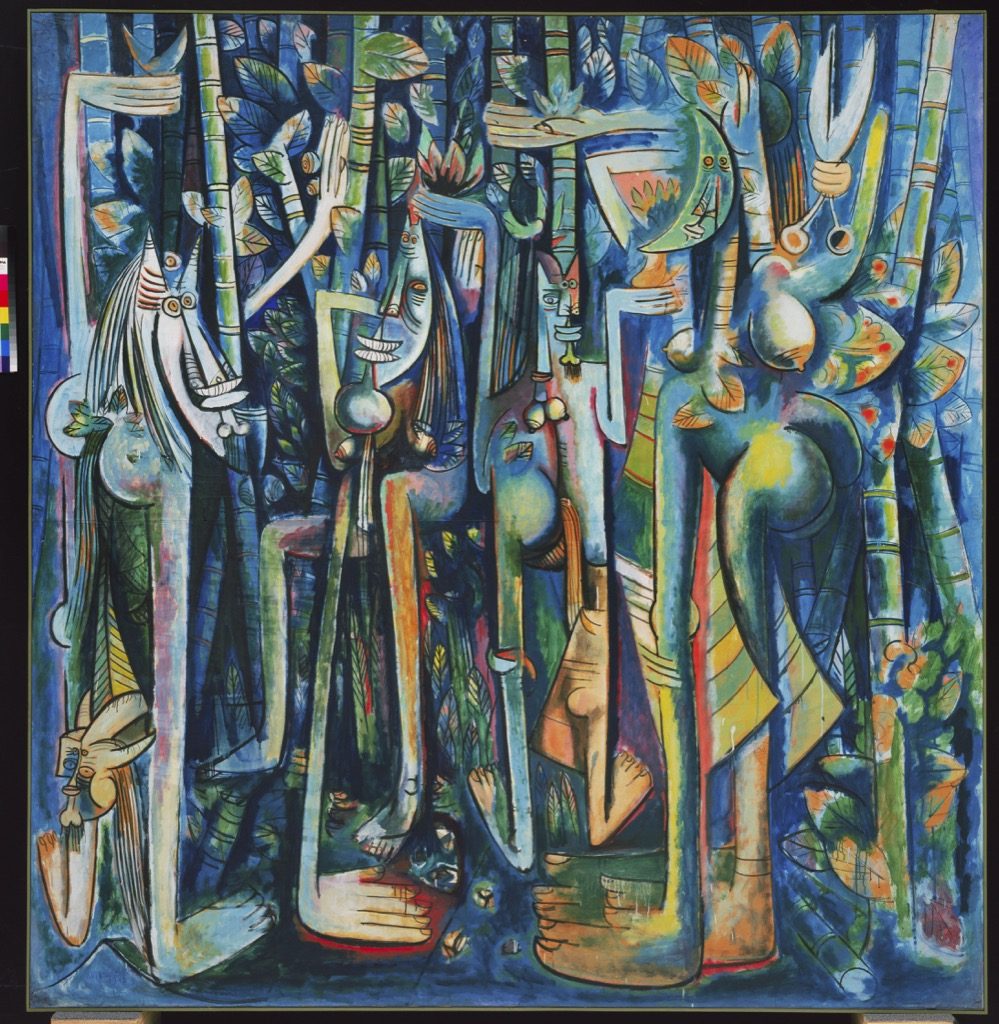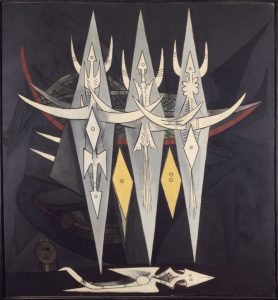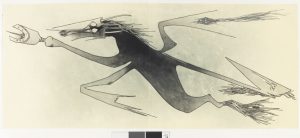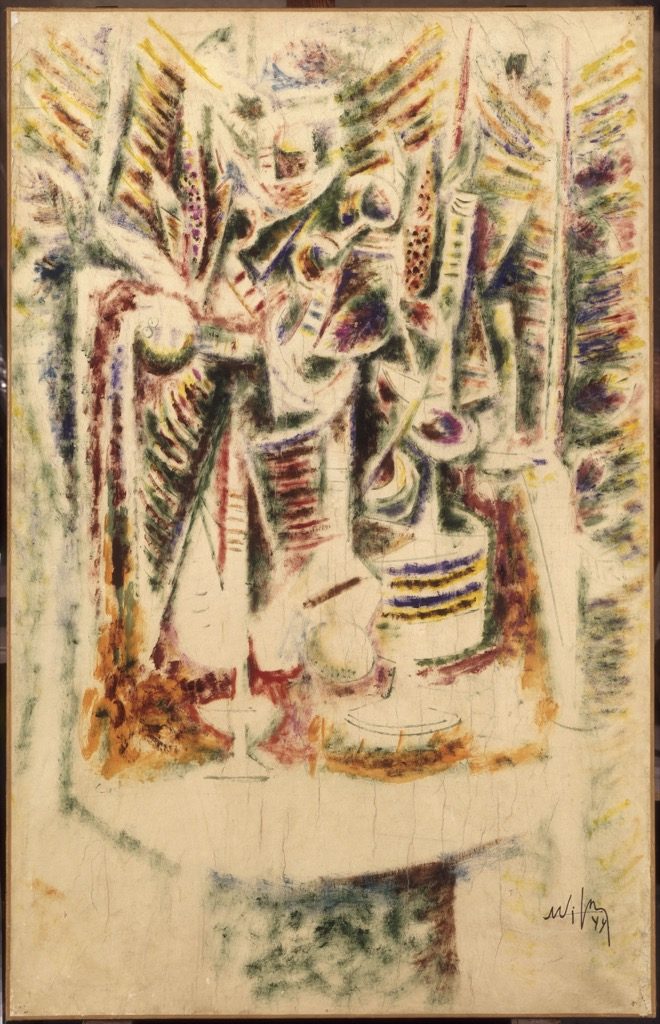Born the 8 th child of the family in Sagua la Grande, a little town east of Havana, Wilfredo Lam takes his Chinese name from his father Enrique Lam-Yam, who emigrated from Canton in 1860. His mother, part Congolese and part Spanish, was born in Cuba. Thus the most handsome metis young man, who studied art in Havana at 14, before leaving for Madrid at 21. The retrospective of over three hundred of his works at Centre Pompidou is the first one in France where he lived for so many years.
A constant emigre, Lam has produced a poetic body of work, always at the heart of cultural exchanges and international influences. After leaving his country for Spain, he fled the civil war and moved to Paris where Nazis chased him away to Marseille and the French Antilles. And back to Cuba in 1941 but not for very long, since he travelled to New York, where Pierre Matisse gave him an exhibition and MoMa buys « La Jungle ». From 1952 to his death in 1982, he lives mostly in Paris and Albissola in Italy, where the beautiful light and tradition of ceramics seduce him.
The strength of this exhibition curated by Catherine David, is based on the large number of personal photos and archives provided by Lam’s children in Paris. Already described in the press, as the best painter of his generation in Cuba in 1929, Wilfredo Lam has a unique style that can be instantly recognised.
He loses his wife and daughter from tuberculosis in 1932 and paints a beautfiul « Mother and child » on paper in 1939 in Paris which is exhibited by Piere Loeb. Marc Vaux takes striking pictures of him in his atelier, he becomes close to Picasso, who like him, is of Spanish culture but also to Joan Miro, Braque, Fernand Léger, Pierre Leyris.
Later on in Marseille, surrealists like Breton, sociologist Claude Levi-Strauss, will be his close friends. Then after meeting poet Aimé Césaire in Guadeloupe, he travels to Haiti where he follows vaudou ceremonies.
After leaving his wife and Cuba in 1952, he meets a young Swedish artist in Paris, Lou Laurin, who will become his third wife. He will exhibit in 1963 in Cuba and takes part in the cultural congress in January 1968. He also attends his friend Alejo Carpentier’s funeral in 1980,.
His style is unique and French Cuban writer Zoé Valdès who attended the opening night, found the exhibit “magnifique”!(Until February 2016 in Paris, then at Museo Nacional Centro de Arte Reina Sofia, Madrid, from 12 April to 15 August, and at the Tate Modern, London, from 14 September to 8 January 2017.
Share this Post
.
